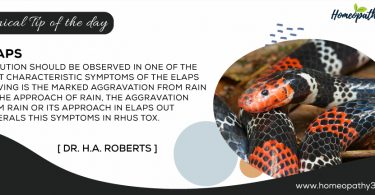Abstract
Constipation, a prevalent gastrointestinal disorder, poses a significant burden on global healthcare systems and quality of life. This article provides a comprehensive review of constipation, encompassing its epidemiology, pathophysiology, clinical presentation, management strategies including homoeopathic management . We delve into the multifaceted nature of constipation, examining its diverse etiological factors, including dietary habits, lifestyle choices, medications, and underlying medical conditions. Furthermore, we explore the latest advancements in diagnostic tools, such as imaging modalities and physiological testing, to facilitate accurate assessment and personalized treatment plans. The article also discusses both conventional and emerging therapeutic approaches, emphasizing the importance of a holistic patient-centred approach to address this often-underestimated condition. By shedding light on the intricate aspects of constipation, this article aims to enhance clinicians’ understanding and optimize the management of this common gastrointestinal ailment, ultimately improving patients’ overall well-being and healthcare outcomes.
Introduction
The term constipation is basically a patient’s perception variously describing subjective feeling of inability to pass faeces smoothly or regularly, the perception of the patient and doctor may vary regarding the term constipation. The exact prevalence of constipation in India is unknown. To know this, first it has to be properly defined based on stool frequency and form (as in western definition) in Indian patients
CLINICAL PRESENTATION
Clinical presentation of constipation can vary among individuals, but it typically involves a range of signs and symptoms related to difficulty passing stools and infrequent bowel movements. Here are the key clinical presentations of constipation:
- Infrequent Bowel Movements: One of the primary indicators of constipation is having fewer than three bowel movements per week. However, the normal frequency of bowel movements can vary widely among individuals, so the definition of constipation may differ from person to person.
- Difficulty Passing Stools: Constipated individuals often experience straining during bowel movements, making it challenging to pass stools. This can lead to discomfort and frustration.
- Hard, Dry Stools: Stools in constipation are typically dry, hard, and lumpy in texture. They can be painful to pass and may cause rectal bleeding or small tears (anal fissures) due to the strain.
- Abdominal Discomfort: Many people with constipation report abdominal discomfort, cramping, or bloating. This discomfort is often relieved temporarily after a bowel movement.
- Feeling of Incomplete Evacuation: After a bowel movement, individuals with constipation may still feel as though they have not fully emptied their bowels. This sensation can lead to the need for frequent return visits to the toilet.
- Rectal Blockage: In severe cases of constipation, impacted stool can create a blockage in the rectum, causing intense discomfort, pain, and even nausea and vomiting.
- Reduced Appetite: Some individuals may experience a reduced appetite or nausea due to the discomfort associated with constipation.
- Anal Fissures and Hemorrhoids: Straining during bowel movements can increase the risk of developing anal fissures (small tears in the anal canal) and hemorrhoids (swollen blood vessels around the anus). These conditions can cause pain, bleeding, and itching.
- Changes in Stool Size and Shape: Constipation may lead to changes in the size and shape of stools. Some people may pass small, pellet-like stools.
- Long Duration of Symptoms: Chronic constipation refers to constipation that persists for an extended period, typically for several weeks or months. It may require more targeted treatment and investigation into underlying causes.
It’s important to note that constipation can have various underlying causes, including dietary factors, lack of physical activity, medications, medical conditions (e.g., irritable bowel syndrome, hypothyroidism), and psychological factors.
TYPES OF CONSTIPATION-
Simple constipation
Simple constipation is extremely common and does not signify underlying organic disease. It usually responds to increased dietary fibre or the use of bulking agents; an adequate fluid intake is also essential
Severe idiopathic constipation
This occurs almost exclusively in young women and often begins in childhood or adolescence. The cause motor activity in the colon.
Epidemiological aspects of constipation:
- Prevalence: Constipation is a highly prevalent condition worldwide, affecting individuals of all ages. Estimates of its prevalence vary, but studies suggest that between 12% and 19% of the global population experiences chronic constipation, with women being more commonly affected than men.
- Age: The prevalence of constipation tends to increase with age. It is more common in older adults, particularly those aged 65 and older. This could be due to various factors, including changes in diet, reduced physical activity, and the use of medications commonly associated with constipation in this age group.
- Gender: Women are more likely to report constipation than men, and this gender difference is observed across various age groups. Hormonal factors and societal expectations related to bowel habits may contribute to this disparity.
- Socioeconomic Status: Constipation can affect individuals from all socioeconomic backgrounds, but some studies have suggested that people with lower socioeconomic status may be at a higher risk. Access to healthcare, dietary choices, and lifestyle factors can all play a role in this association.
- Geographic Variations: The prevalence of constipation can vary by region and country. Cultural and dietary factors, as well as healthcare practices, can influence these variations.
- Diet and Lifestyle: Dietary habits, such as low fiber intake and inadequate hydration, are significant risk factors for constipation. Sedentary lifestyles and lack of physical activity can also contribute to the development of constipation.
- Medications and Medical Conditions: Certain medications, including opioids, anticholinergic drugs, and some antidepressants, can cause constipation as a side effect. Additionally, various medical conditions, such as irritable bowel syndrome (IBS), hypothyroidism, and neurological disorders, may increase the risk of constipation.
- Pregnancy: Constipation is a common complaint during pregnancy, affecting a significant proportion of pregnant women. Hormonal changes, increased pressure on the rectum, and dietary modifications during pregnancy contribute to this.
- Quality of Life: Chronic constipation can significantly impact an individual’s quality of life, leading to discomfort, distress, and decreased overall well-being.
PATHOPHYSIOLOGY OF THE DISEASE
- Decreased Motility: Slowed or weakened contractions of the muscles in the digestive tract, especially the colon, can lead to slower movement of stool.
- Increased Water Absorption: Excessive water absorption from the stool in the colon can result in dry and hardened stool, making it difficult to pass.
- Inadequate Fiber Intake: A diet low in fiber can lead to smaller and harder stools, as fiber helps retain water in the stool and adds bulk to it.
- Pelvic Floor Dysfunction: Impaired relaxation or coordination of pelvic floor muscles can hinder the expulsion of stool from the rectum.
- Neurological Conditions: Certain neurological disorders can disrupt the communication between the brain and the intestines, affecting bowel movements.
- Hormonal Factors: Hormonal changes, such as those during pregnancy, can affect bowel function.
- Medications: Some medications, particularly those that slow intestinal motility (e.g., opioids, anticholinergics), can contribute to constipation.
- Psychological Factors: Stress and anxiety can influence bowel habits and exacerbate constipation in some individuals.
- Structural Abnormalities: Structural issues within the colon or rectum, such as strictures or tumours, can physically block or narrow the passageway for stool.
- Lifestyle Factors: Sedentary behaviour and lack of physical activity can contribute to constipation by slowing down intestinal motility.
These factors can interact and vary from person to person, resulting in constipation. Understanding the underlying pathophysiology is crucial for tailoring treatment approaches and addressing the specific causes contributing to an individual’s constipation.
GENERAL MANAGEMENT
The general management of constipation typically involves a combination of lifestyle modifications, dietary changes, and, if necessary, the use of over-the-counter or prescription medications. Here are some strategies for managing constipation:
Dietary Modifications:
- Increase Fiber Intake: Consuming more dietary fiber can add bulk to the stool and promote regular bowel movements. Foods rich in fiber include fruits, vegetables, whole grains, legumes, and nuts.
- Stay Hydrated: Drinking an adequate amount of water helps keep stools soft and easier to pass. Aim for at least 8-10 cups of water per day.
- Prunes and Prune Juice: Prunes and prune juice contain natural laxatives and can be effective in relieving constipation.
- Limit Processed Foods: Reduce the consumption of highly processed foods, which are often low in fiber and can contribute to constipation.
Lifestyle Changes:
- Regular Exercise: Engaging in regular physical activity can stimulate bowel movements and improve overall digestive health.
- Establish a Routine: Try to have regular bowel movements by setting aside time each day, such as after meals, to encourage a consistent schedule.
- Toilet Habits: Pay attention to the urge to have a bowel movement and do not delay when you feel the need to go.
Over-the-Counter (OTC) Remedies:
- Fiber Supplements: If increasing dietary fiber is challenging, consider using OTC fiber supplements like psyllium (Metamucil) or methylcellulose to help soften and bulk up stools.
- Osmotic Laxatives: OTC osmotic laxatives like polyethylene glycol (MiraLAX) can draw water into the intestines, softening stool and promoting bowel movements.
Prescription Medications:
- In cases of chronic or severe constipation not responding to OTC treatments, a healthcare provider may prescribe medications such as prescription-strength osmotic laxatives, lubiprostone, or linaclotide.
- Biofeedback Therapy: For individuals with pelvic floor dysfunction, biofeedback therapy can help improve coordination and relaxation of pelvic muscles to facilitate easier bowel movements.
Address Underlying Causes: If constipation is a symptom of an underlying medical condition, such as hypothyroidism or irritable bowel syndrome (IBS), it’s crucial to treat the underlying condition in consultation with a healthcare provider.
Avoiding Trigger Medications: If possible, avoid medications known to cause or exacerbate constipation, especially if alternatives are available.
Regular Follow-Up: If constipation is chronic or severe, consult a healthcare provider for a thorough evaluation to identify underlying causes and develop a personalized treatment plan.
RISK FACTORS
Factors that may increase risk of constipation include:
- Being an older adult
- Being a woman
- Being dehydrated
- Eating a diet that’s low in fiber
- Getting little or no physical activity
- Taking certain medications, including sedatives, opioid pain medications, some antidepressants or medications to lower blood pressure
- Having a mental health condition such as depression or an eating disorder
HOMOEOPATHIC APPROACH AND MANAGEMENT
According to Dr. HAHNEMANN organon of medicine and philosophy Aphorism 259-263 gives instruction about DIET AND REGIMEN.
IN CHRONIC DISEASE- The careful investigation of DIET AND REGIMEN which may act as obstacle to cure is very much necessary in the case of patient of Chronic diseases.
MASTER HAHNEMANN has advised to avoid the following types of diet and regimen in patient suffering from-
CHRONIC DISEASES:
1. Beverages- Coffee, herbal teas, beer prepared with medicinal substances, liquors made with medicinal spices.
2.Food- Highly spiced dishes and sauces, spiced cakes and ices, spiced chocolate, crude medicinal vegetables for soups, dishes of herbs, roots and stalks of plants possessing medicinal qualities, celery, onions, old cheese and meats possess medicinal properties. All excesses in food and in the use of sugar and salt and spirituous drinks.
ACUTE DISEASE:
Food and drinks: in acute disease HAHNEMANN advised to gratify the patients desire with regard to food and drinks without offering or urging.
HOMOEOPATHIC MANAGEMENT: –
1. Alumina- No desire for stool, great straining, constipation of infants and old people and in women of very sedentary habits, rectum in inactive.
2. Anacardium- When ineffectual desire is felt at the rectum. there is sensation of pressure on the rectum after stool.
3.Asafoetida- Chronic constipation, eructation loud and difficult. The pressure of the wind always upwards.
4.Bryonia- Stool dry as if burnt with great thirst. Constipation accompanied by appendicitis. Constipation in warm weather. Faeces hard large and devoid of mucus.
5.Carbo animalis- Constipation where patient thinks bowels will be moved but only wind passes.
6.Graphitis- Stool are knotty, in large lumps and are united by mucous threads. Constipation with menses too late and scanty.
7.Gratiola- Constipation of cancer, rectum constricted.
8.Lycopodium- Constipation of the most severe kind, ineffective urging to stool. Acidity and burning in the stomach which is better by eructation.
9.Magnesium muriaticum- Painful urging before stool, burning in anus after stool, urine can only be passed by leaning down and by pressing the abdominal muscles. Constipation in children during dentition. Flatulence the motion are large, long, hard and knotty but cause no pain.
10.Natrium muriaticum- Unsatisfactory motions, stools like sheep dung.
11.Nux vomica- Constipation with ineffectual desire for stools. In person of sedentary habits and accustomed to purgatives.
12.Opium- Constipation due to the inactivity of the intestine. Stools are dry, hard and like balls.
13.Platina- Is indicated in constipation of traveller and emigrants where the trouble is brought on by change in the manner of living. Frequent urging, scanty and dry stool.
14.Plumbum met- Head remedy for chronic constipation, there is urging to stool but it is passed with great difficulty. Stool hard and lumpy causing fissure.
15.Podophyllum- Chronic constipation associate with prolapse of rectum and anus.
16.Sanicula- Constipation stool large and hard impossible to evacuate. After great straining it is partially expelled and a portion recedes which must be removed mechanically. Stool several inches long not requiring much effort to evacuate.
17.Sepia- Constipation during pregnancy, stools are hard and knotty. Bleeding at stools with fullness of rectum. Large hard stools, sensation of a ball in rectum.
18.Silicea-Constipation before and during menses. Stool comes down with difficulty and when partially expelled recedes again.
19.Sulphur- Constipation on account of fear of passing the stool because stools are hard, knotty and difficult to expel, and the cause pain in the anus while passing.
20.Thuja occidentalis-Chronic constipation, stool like hard black balls, constipation with violent rectal pain, causing stools to recede.
Written By-
Dr Kuldeep Nigam Govt. Homoeopathic Medical College & Hospital, Bhopal
Under the Guidance of Dr Praveen Jaiswal Prof & H.O.D, Dept. of Practice of medicine and Dr. Umesh Masram Asst. Prof Dept. of Practice of medicine.




